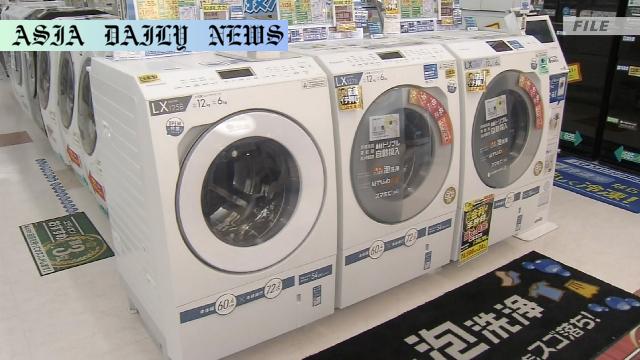Tariffs: US imposes 50% tariffs on steel-made home appliances.
The US implements a 50% tariff on imported steel-made home appliances.
Tariffs aim to enhance America’s domestic manufacturing sector.
The tariff expansion targets goods from Mexico, China, and South Korea.

Introduction to US Tariff Policy on Home Appliances
The United States recently escalated its trade protection measures by implementing a 50% tariff on a wide range of home appliances made from steel and aluminum. The policy, championed by President Donald Trump, aims to bolster domestic manufacturing by reducing reliance on imports from countries like Mexico, China, and South Korea. This decision is a continuation of the administration’s broader efforts to prioritize the American manufacturing sector.
Scope and Impact of the New Tariffs
The tariff applies to eight specific types of household appliances, including refrigerators, washing machines, and dishwashers. These products are classified as steel derivative goods, meaning the level of taxation depends on the amount of steel and aluminum contained in each item. The policy, which had initially imposed a 25% tariff, was amended in March and is now doubled to a substantial 50%. Consequently, this dramatic increase is expected to send ripples across both foreign exporters and domestic consumers.
Boosting American Manufacturing: A Strategic Goal
The additional tariffs are part of a broader strategy to reduce America’s dependency on imported goods while fostering domestic production. By making foreign goods significantly more expensive, the government hopes to encourage both businesses and consumers to turn to domestically produced items. However, industries dependent on imports have voiced concerns about potential cost increases and limited product availability, potentially straining domestic supply chains.
Global Trade Implications and Market Reactions
This tariff policy has broader implications for global trade. Countries like Mexico, China, and South Korea, which are major suppliers of steel-made appliances, might seek retaliatory measures or explore new markets for their goods. Moreover, American consumers could see appliance prices rise, potentially dampening demand and impacting the bottom line for both manufacturers and retailers.
Conclusion: A Balancing Act
While the 50% tariff on steel-based appliances is a bold step aimed at reviving American manufacturing, its unintended consequences cannot be ignored. From global trade tensions to potential cost surges for consumers, the tariff raises vital questions about the efficacy of protectionist policies in a highly interconnected global economy. Balancing the needs of domestic industries with fair consumer pricing and international relations will be the key challenges ahead.
Commentary
A Bold Policy with Far-Reaching Repercussions
The implementation of a 50% tariff on steel-based home appliances represents a bold move by the United States to protect and invigorate its domestic manufacturing industry. However, such measures often come with a complex set of trade-offs that warrant careful consideration.
Impact on Domestic and Global Stakeholders
On one hand, these tariffs aim to create opportunities for American manufacturers by reducing competition from foreign imports. However, for foreign exporters such as China and South Korea, this policy poses a significant challenge as they struggle to maintain their share of the US market. Additionally, American consumers may feel the pressure of increased costs, which could alter purchase behaviors and affect market dynamics over time.
The Larger Trade Landscape
This policy shift also highlights the growing trend of trade protectionism in global markets. A 50% tariff not only signals a strong political stance but also runs the risk of sparking retaliatory measures from affected nations. These tensions could escalate, leading to broader economic repercussions and strained bilateral relationships. The cumulative impact on consumers, suppliers, and international relations underscores the importance of an even-handed approach to trade policies.
Final Thoughts
Ultimately, while the intention behind the tariff is admirable—securing domestic jobs and reducing reliance on imports—the execution and implications require ongoing evaluation. Striking a balance between fostering local industry and engaging in fair trade practices will be the real test for policymakers. As this story unfolds, it serves as a critical case study in the challenges of enacting large-scale economic reforms with global implications.


